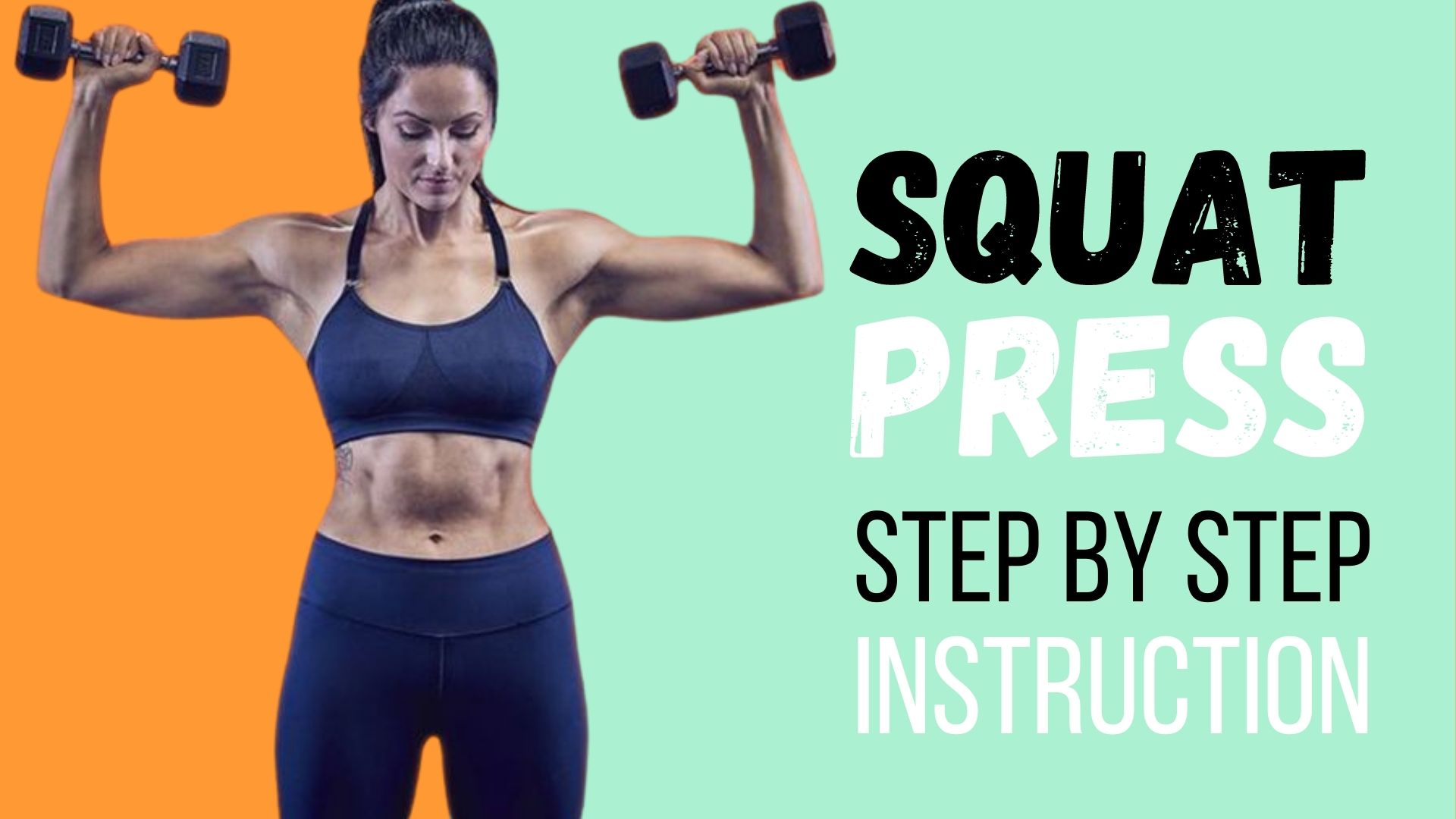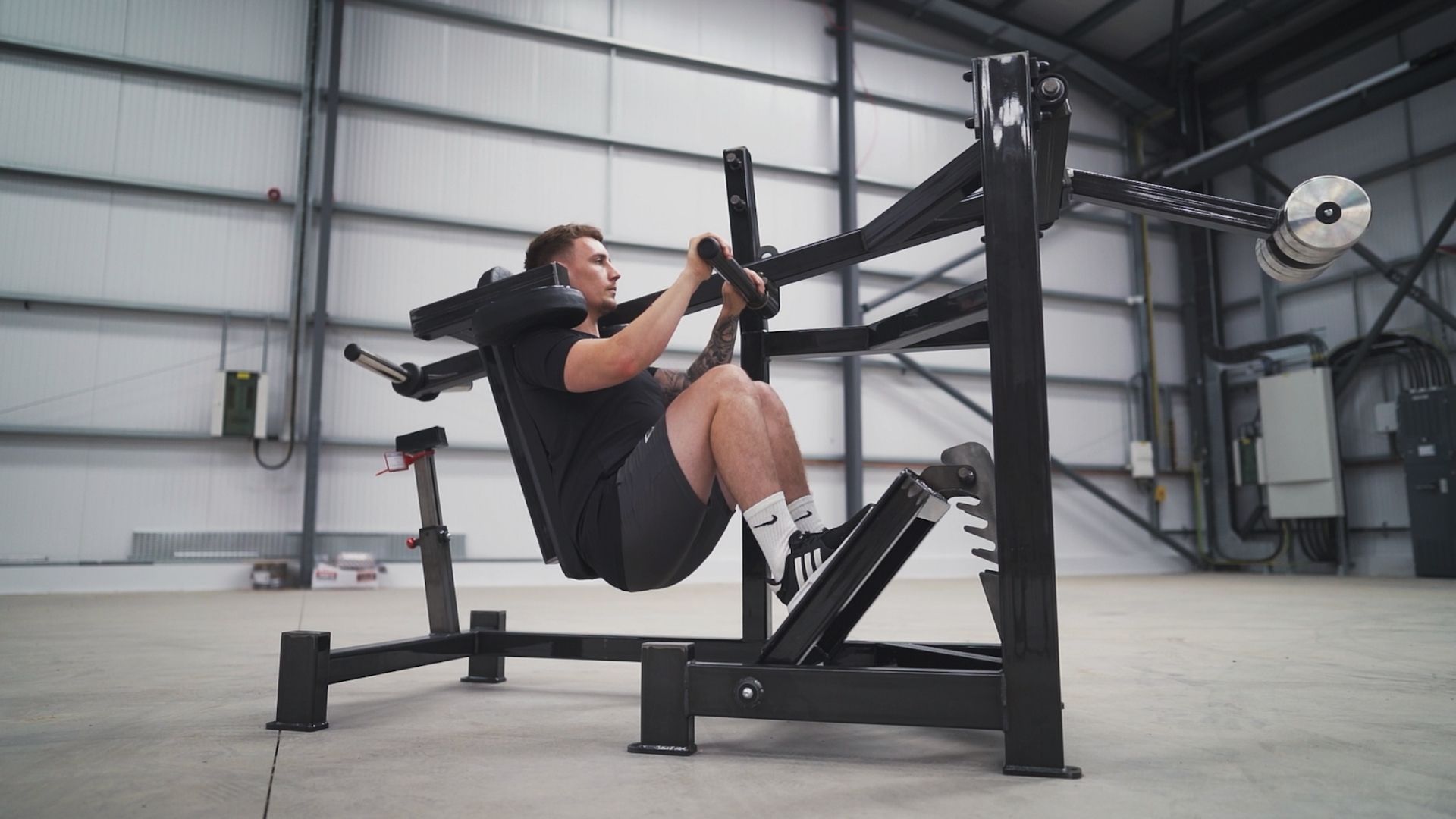
Barbell Squat: Build Lower Body Strength and Power!
The barbell squat can be used by both powerlifters and novices, and it’s a great variation to add to your strength training.
What Is A Barbell Squat?
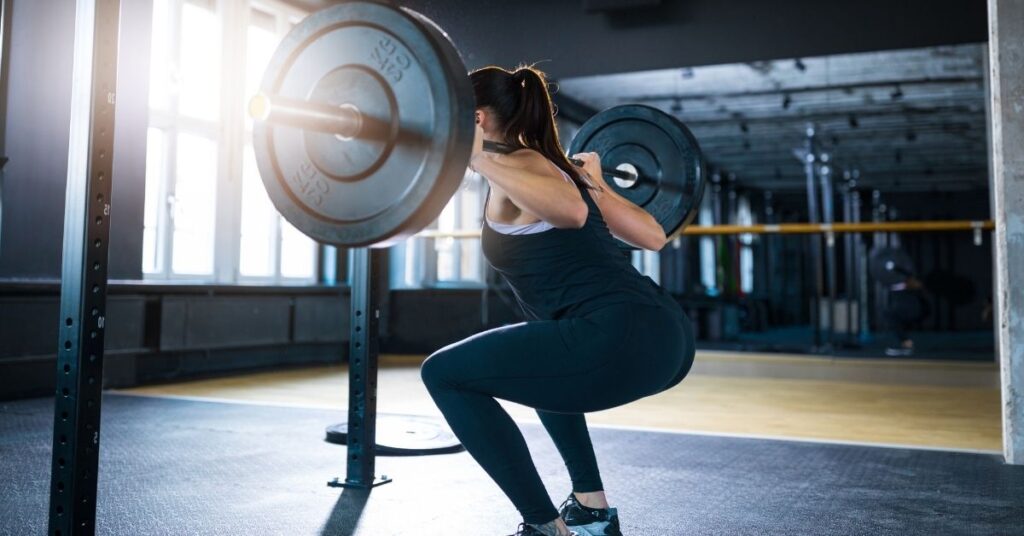
Barbell squats are a common compound exercise that emphasizes strength and building lower-body muscles.
This is the best way to begin a leg day.
It can also be used as a centerpiece in a lower-body program.
The Squat is a competition lift in powerlifting and serves as a classic measure of lower-body strength.
The posterior chain is the focus of the squat, but all parts of the body are worked.
You can train the back Squat in any weight, from singles to sets of 20 or more reps.
How To Perform Barbell Squat?
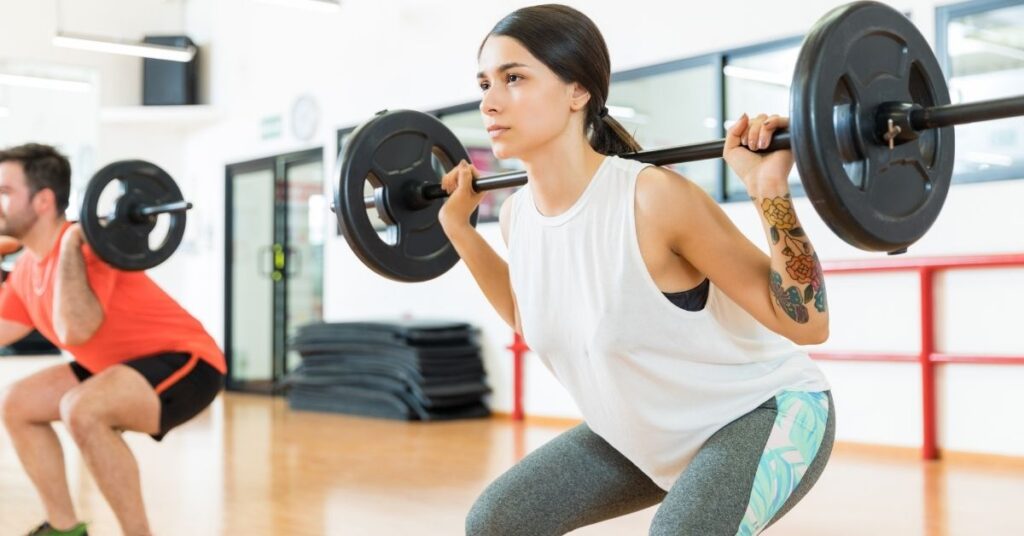
- Standing with your feet wider than shoulder-width apart will allow you to squat deeper, involving your glutes as well as your hamstrings.
- You should hold the barbell in your upper back and use an overhand grip to keep it from resting on your neck.
- To engage your upper back muscles, hug the barbell into your traps.
- Slowly squat under the weight of the bar.
- Head up, straighten your back, and keep your buns down.
- With your legs bent at 90 degrees, lower your hips until your knees meet your hips.
- A deeper squat is better, but you need to build strength and flexibility.
- Push your heels to the floor and push yourself up explosively.
- You should keep your form until you are straightened up: that’s one.
Barbell Squat Variations
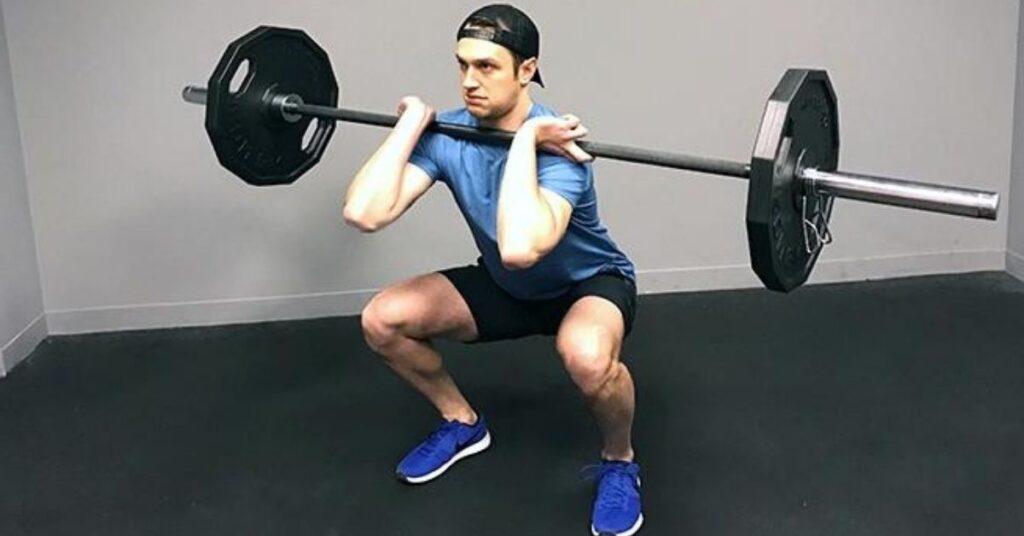
Front Squat
How
- If your shoulders are large enough, you can rest the bar on either side of your neck.
- Keep your elbows straight so that your triceps meet the ground.
- Support the bar by supporting your fingertips.
- To prevent the bar rolling, ensure your arms remain in the same position throughout the Squat.
- As you would normally, squat.
Why
Front squats offer all the benefits of regular back squats but relieve some pressure from your knees and back, so you can train longer.
This technique requires flexibility, so it is more than just muscle mass.
Although it will take some practice, your body will be grateful for it.
Zercher Squat
If you want to know more about Zercher Squat, please read: The Ultimate Zercher Squats Guide: Instructions, Benefits, Variations, Tips & Tricks
How
- You can keep the same stance, but instead of cradling the bar in your elbows, you should cradle it in your crook.
- Keep your back straight and not curled and your core tight throughout.
- Transfer the weight to your heels, putting your feet slightly wider than shoulder-width apart.
- You can either keep your hands together or cup your other hand.
- Keep your legs parallel to the bar and Squat until it touches your knees.
- Immediately pause, then accelerate hard.
Why
Squats done in front or back can strain your wrists and hips as well as your shoulders.
The lower center of gravity makes it easier to do a squat.
This exercise will also give your abs and biceps an intense workout.
Overhead Squat
How
- Start with the bar at your head.
- Lift it up to your chest, and then raise it up until your arms reach the ceiling.
- Your hands should be more than shoulder-width apart, with the bar slightly behind you.
- To get there, you can pull your shoulders back and retract your shoulder blades.
- Keep the bar at a constant height above your head by squatting down until your thighs meet the ground.
- Keep your hips straight and your legs extended.
Why
The bar is overhead, so your shoulders are not just resting on the pads.
It also gives your triceps an exercise.
You will engage your core and keep your upper torso flexible.
It will also make you look cool.
Hack Squat
If you want to know more about Hack Squat, please read: Detailed Hack Squat Guide | Benefits, Tips, Tricks, Working Muscles & More
How
- Keep your hands in the same place as your hands and get into a deadlifting position.
- Your palms should be facing backward, and you must hold the bar tightly.
- Keep your head straight while your back is straight.
- Keep your hips extended and lift your chest until the bar is behind your glutes.
- How much you lift will depend on how strong your forearms are.
Why
Most squat variations can compress your spine if your back muscles can withstand the pressure.
This will alleviate the pressure by moving your center of gravity lower than your core.
However, it will give your quads a lot more work; great if your goal is to build beach shorts.
4 Benefits Of Doing Barbell Squats
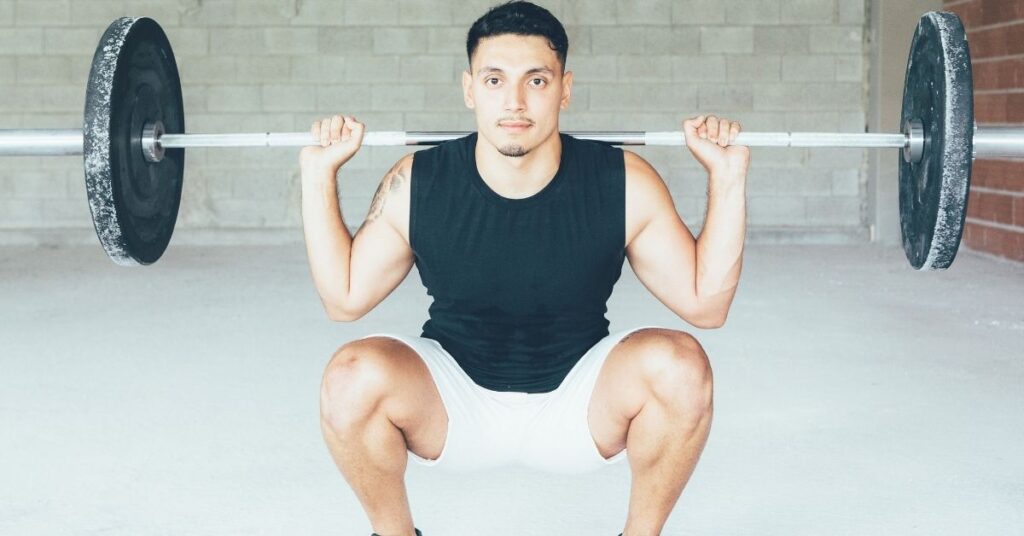
Barbell squats can be a great addition to your weightlifting program.
Barbell Squats Increase Muscle Mass In The Lower Body
Barbell squats are more effective than standard bodyweight squats because they add weight.
Barbell Squats Burn Calories
Calories Barbell squats are a great way to increase your fitness and burn calories.
Barbell Squats Can Be Easily Adjusted
Using different weight plates, you can make incremental adjustments to your barbell squats.
Warm up with lighter-weight squats to improve your form.
The front-squat is another variation of advanced barbell exercises.
Barbell Squats Can Help Improve Weight-Training Exercises
Barbell squats are a great way to improve your form in compound exercises such as the deadlift and bench press.
Common Mistakes

These common mistakes can be avoided to ensure safe and effective barbell front squats.
Dropping Elbows Down
You may find it difficult to keep your elbows raised if your wrists are stiff.
If your elbows drop during the Squat, you risk the bar moving forward and hitting the chest.
You can adjust your grip by doing wrist flexibility exercises.
Instead of four, you can use a bodybuilder grip or two fingers under the bar.
To give your elbows more space and relieve tension, you can also place your hands slightly wider than the bar.
To keep the bar high, you may have to wear wicking fibers, nylon materials, or any other shiny or slippery work apparel.
Cotton often works well.
Two shirts are a good idea for exercisers who first learn to do the barbell front Squat.
It provides a bit of padding at the shoulders and upper chest.
Using The Wrong Grip
It’s easy to assume that your gym-mates have the best grip.
Personalization is key for this exercise.
You should use the grip that is most comfortable for you.
This will allow you to keep your elbows up and your chest elevated.
It’s more important to hold the barbell in place while you squat than to use the same grip for everyone else in the gym.
Knees Rolling In
It is crucial to place your foot and toes correctly.
Although everyone will have their own unique position, the general rule is to keep your feet slightly wider than a traditional squat, but not so wide that your knees roll in when the footfalls.
Before you start, check your posture without adding weight.
Your feet should be in a comfortable place.
Then, lower your body into an incline.
If your knees don’t drop in naturally, it is too wide.
Squat
Traditional squats only lower your hips to the knees.
This requires less flexibility in your hips and ankles.
Barbell front squats require a deeper squat, which may be unfamiliar to some.
Your butt will be close to your lower leg when you are in the lowest position.
You won’t get the full benefits of this squat variation if you don’t do the full range.
You can start by practicing the movement with no weight to gain flexibility.
When you feel confident, increase your weight.
Bouncing At The Bottom
You should do this exercise slowly and carefully.
If you feel like you are bouncing at the bottom of the move, either you are going too fast or don’t have enough weight.
Slow down.
If you find this too easy, increase your weight.
You can practice this exercise with either an unweighted or long barbell or a PVC pipe.
This will allow you to quickly learn the correct form and sequence without risking injury.
How To Work Out Safely And Avoid Injury
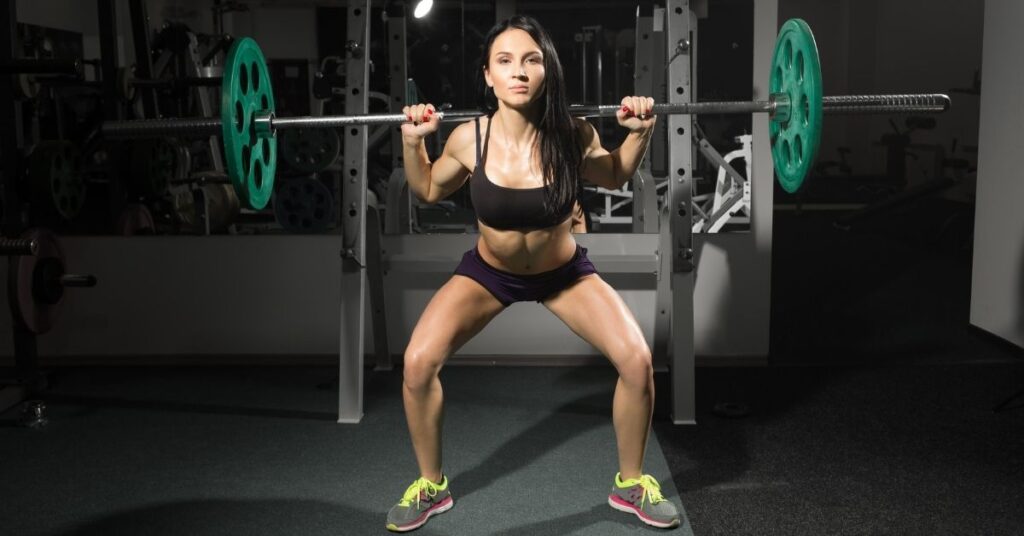
Before you begin an exercise program, make sure to consult your doctor if you have any pre-existing or current health conditions.
To ensure safety and effectiveness, proper exercise technique is crucial.
However, you might need to adjust each exercise depending on your personal needs.
You should choose a weight that allows you to maintain complete control over your body during the exercise.
Pay attention to your body and stop if you feel discomfort or pain.
You will see steady progress in your fitness and increase body strength if you incorporate proper warm-ups and rest into your exercise routine.
Your ability to recover after your workouts will determine your final results.
To allow adequate recovery, you should rest for 24 and 48 hours before returning to the same muscle groups.




